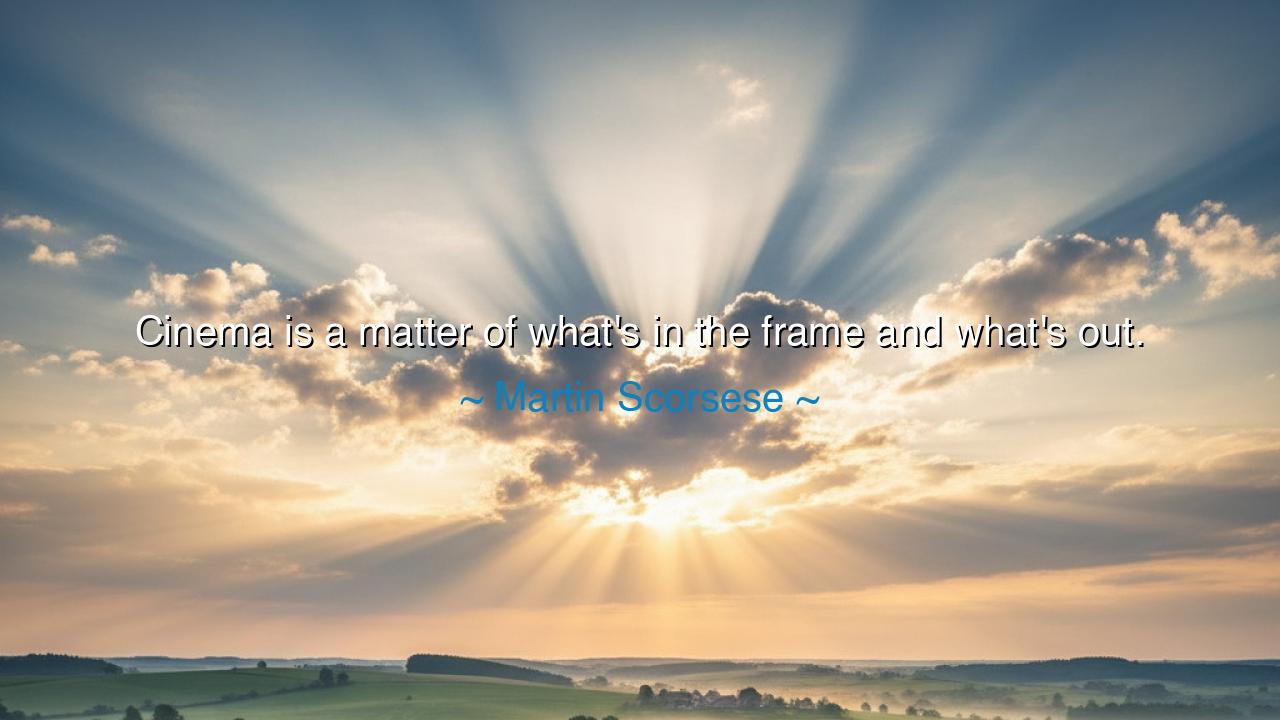
Cinema is a matter of what's in the frame and what's out.






Martin Scorsese, master craftsman of film and tireless guardian of its history, once declared: “Cinema is a matter of what’s in the frame and what’s out.” In these few words he reveals the hidden essence of storytelling, the secret by which illusion becomes truth. For the art of cinema, like the art of life, lies not merely in what is shown, but in what is withheld. The frame is a boundary, a window — what falls inside it becomes the story; what is left beyond it becomes mystery, suggestion, the unseen world that shapes what we see.
The ancients understood this principle, though they spoke not of cameras but of masks, of stages, of symbols. In the tragedies of Greece, much was left unseen. The violence that shook kingdoms — the murders of Agamemnon, the blinding of Oedipus — happened offstage. Only their aftermath was brought before the audience. This was not weakness but wisdom, for by leaving the horror “out of the frame,” the poet stirred the imagination of the listener more deeply than any stage-blood could. Thus Scorsese’s insight stretches back to the earliest art: the tension between the revealed and the concealed is what makes drama alive.
History, too, shows the power of the frame. In the propaganda films of wartime, nations learned to wield images like swords. What was placed inside the frame was unity, heroism, sacrifice. What was kept outside the frame was suffering, dissent, despair. Entire peoples were moved, not by lies alone, but by selective truth. The frame is never neutral; it is always a choice, always a declaration of what matters and what must be ignored. Scorsese, in his wisdom, reminds us that cinema is not merely a reflection of reality, but an act of shaping, of choosing what to see and what to hide.
On a more personal scale, consider the story of Orson Welles and Citizen Kane. Every shot was crafted to reveal only part of the truth, to suggest depths beyond what the eye could see. The mystery of “Rosebud” lingers precisely because it was framed as a whisper, an enigma, something never fully illuminated. The frame here was both a container and a veil. It taught generations that cinema is not about showing everything, but about guiding the soul toward meaning through what is revealed and what is withheld.
But Scorsese’s words reach beyond cinema into the heart of human life. For is not life itself a matter of what is in our frame of attention, and what we choose to leave out? One man frames his life around grief, another around hope; one focuses only on obstacles, another on opportunities. The story we tell ourselves is crafted by the frame we set. Just as the director guides the audience, so too does each of us guide our own heart by deciding where to look and what to ignore.
The lesson is therefore clear: we must become mindful of our own frames. In art, let us respect the power of the unseen; in life, let us learn to focus on what nourishes us and let go of what diminishes us. Practically, this means choosing wisely what stories we consume, what voices we listen to, what thoughts we allow to take root in the mind. Ask yourself daily: What is in my frame? What lies outside it? By this reflection, you will learn to shape your days with intention rather than accident.
So, O seekers of truth, remember Scorsese’s wisdom. Cinema is not about showing everything, but about choosing. And life is the same. Your power lies in what you frame, and in what you leave beyond the edges. If you choose well, the story of your days will be not chaos but meaning, not noise but music, not despair but vision. For the secret of both art and life is not to see everything, but to see with clarity — and to know what is worth showing, and what is worth leaving in silence.






AAdministratorAdministrator
Welcome, honored guests. Please leave a comment, we will respond soon